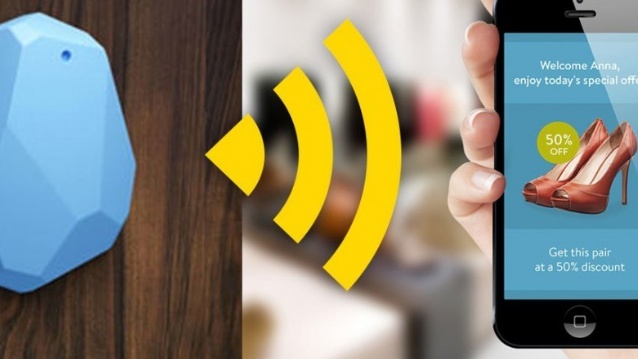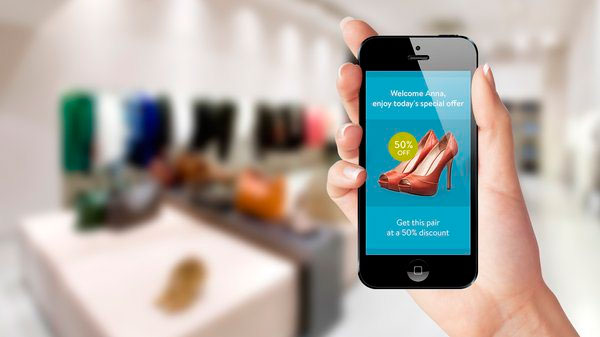
While participating in significant events or conferences, it is but obvious for the attendees to feel lost without help. In order to guide the attendees about the basic theme of the event, event schedule, people and presentations of their interest, discussions they can participate in, etc. Apple introduced iBeacons at WWDC 2013. This has increased the expectations of the attendees for a more contextualized experience.
Moreover, the exhibitors or retailers at the event also want to use beacons for beating the competition offered by online retailers who have become prominent by providing ‘mobility solution’ space. A significant increase in interaction rate with attendees has been observed in conferences using the beacon technology.
Thus, Beacons have turned out to be more of a need than a luxury for engaging attendees and getting fruitful outcomes for the success of an event. Mobile app development companies thus need to focus on integrating this feature into their apps.
More about Beacon technology
iBeacons are low-powered, low-cost, indoor transmitters that can notify the iOS 7 devices in the vicinity of their presence. They are so tiny that they can be installed in the space where the event is to take place without being noticed. This location and proximity detection technology introduced by Apple works on the Bluetooth low energy (BLE) or Bluetooth smart technology by continuously transmitting Bluetooth signals which are detected by the smartphones of the attendees if the correct app is installed. Moreover, Bluetooth 4.0 devices, such as Android and Windows devices, that support dual mode also have BLE. Thus, all BLE-enabled devices are supported by Beacons.

Depending upon the environment and signal strength, Beacons generally work in three proximity ranges – immediate (within a few centimetres), near (within a few meters), and far (approximately 10-50 meters). However, the range is significantly affected by interference.
iBeacon may be added to any existing event app as a module or tab. While using beacon technology, there is no need for the app to be active on the screen all the time to pick up signals. However, the user should launch the app once and have Bluetooth enabled for the iBeacon to start working. The app can then run in the background and pick up signals from the beacon while retrieving relevant data.
Creative ways of using beacon technology for events
Instant event registration: People these days don’t have the patience and time to stand in long queues. Beacons help here by allowing instant registration for the event at the entry by entering basic information using a scan, QR code, or from within the app. The beacon then checks the attendee in and directs him/her to collect the welcome kit.
#1 Guiding through floor maps:
At a particularly large event location, many different mini events may be taking place simultaneously. This may lead to confusion amongst the attendees in regards to where their event is taking place. Beacon technology helps event organizers in preparing floor maps to prevent attendees from getting lost as they can navigate to their event using the event app installed on their mobile. This works in a similar way as Google Maps. In case of mobile apps, beacons act as the perfect location identifier.
#2 Sharing the event schedule:
Using beacon technology, the entire event schedule can be shared with the attendee, and he/she will get a reminder about to start of an event and the option to navigate to that event.
#3 Food and refreshments guide:
Corporate events may host people in large numbers and sometimes may be from throughout the world. Food and refreshments are, without any doubt, an integral part of such an event and serving food according to everyone’s taste in needed for a wholesome experience of the event. Event planners and organizers get needed information related to food preferences and dietary habits of participants through beacons.
This helps them plan for the upcoming event keeping these things in mind. Eventgoers are also guided by beacons to their favourite refreshments, fresh food choices (with information of their ingredients), or foods they should avoid due to allergies, health reasons, or dietary restrictions.
#4 Building up a smart network:
One of the major reason for visiting events is to build professional networks. Rather than moving around and looking at every attendee’s badges, beacons, with the use of geofencing, can let a participant know who all are present in a room at any point of time with details including their name, employer, and designation.
The participant can then carry out a quick LinkedIn search to start a meaningful conversation with another participant as per their interests and may even be able to strike a partnership or convince the other party to invest in their start-up.
#5 Using gamification for engagement:
As the event progresses, gamification of the app plays an important role in keep eventgoers engaged. This may be done through sharing some wow facts, tips, quiz, Q&A, etc. as the event progresses and rewarding participants at the top of the leader board at the end of each day. Giveaways may be clubbed with value actions such as filling a feedback form or participating in a survey.
To conclude
Beacon technology is empowering brands to bring drastic changes in the way events are being organized and experienced by enhancing event engagement. However, to make the maximum benefit of this technology, the attendees need should have the app installed on their mobile, the Bluetooth on, and the mobile batteries completely charged. These limitations of the iBeacon application need to be kept in mind while implementing it to your event.

